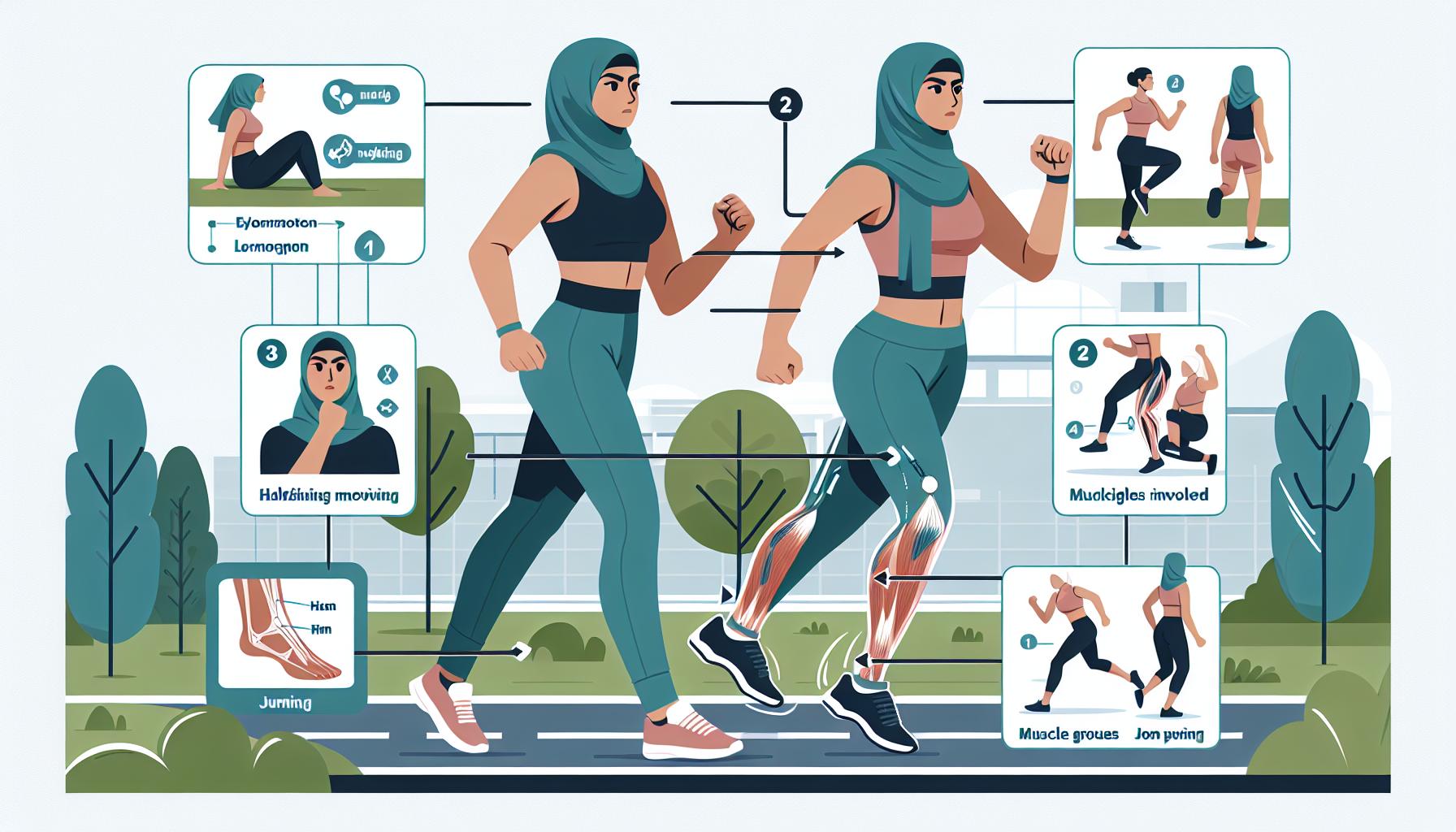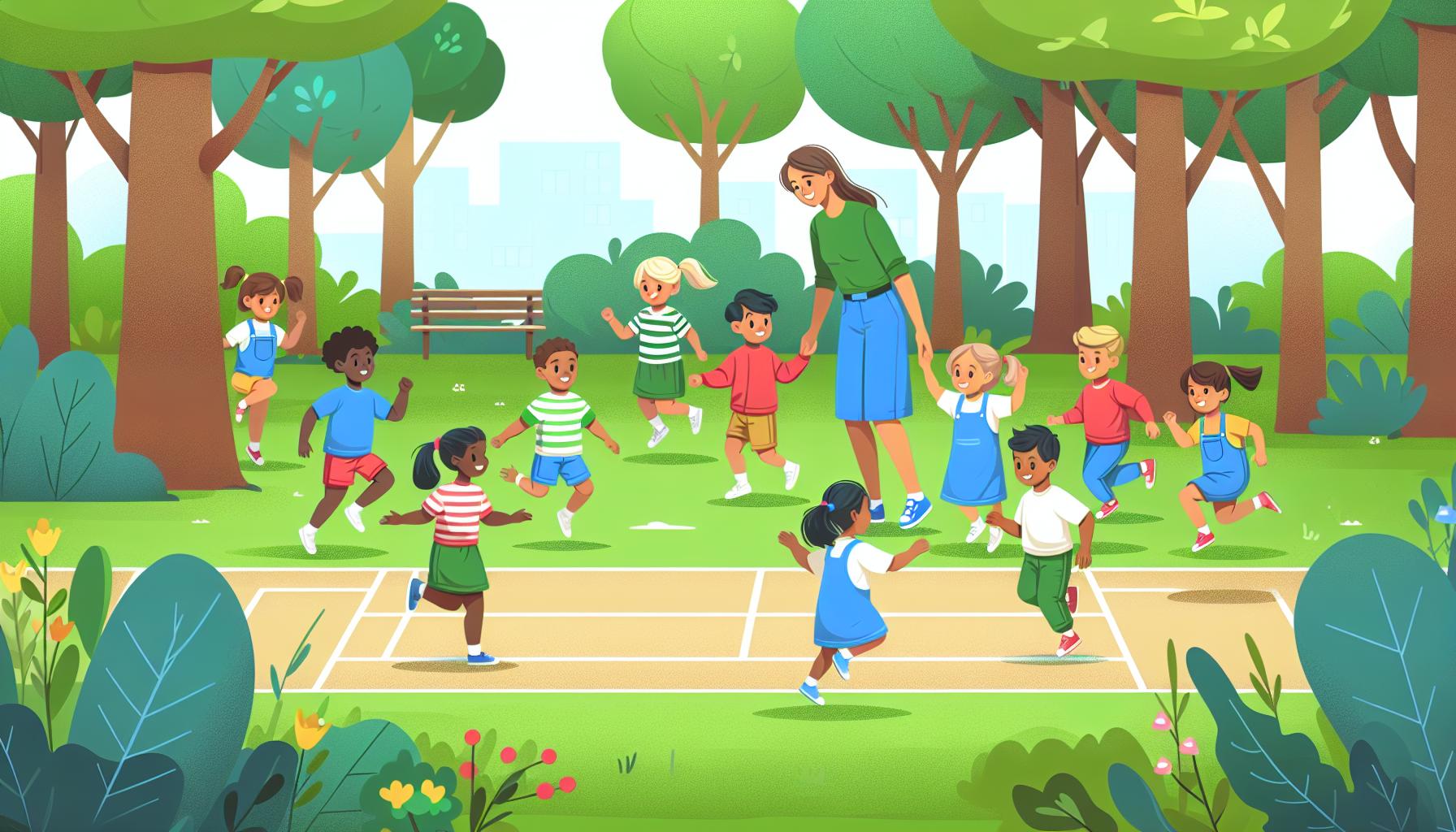Understanding Locomotor Skills: Fun Activities to Boost Your Child’s Development
Ever wondered why you can walk, run, or hop without giving it a second thought? That’s all thanks to your locomotor skills. These fundamental movements are the building blocks of your physical coordination and mobility.
Understanding locomotor skills isn’t just for athletes or dancers. It’s critical for anyone interested in maintaining or improving their physical health. So, let’s dive in and explore what locomotor skills really are and why they’re so essential.
Key Takeaways
- Locomotor skills are fundamental motor patterns essential for moving the body from one location to another. Examples include walking, running, hopping, jumping, skipping, leaping, galloping, and sliding.
- These skills contribute to overall mobility and coordination, enabling individuals to complete daily tasks with ease and engage in more complex movements required for sports and dance.
- Locomotor skills are typically acquired and refined throughout childhood, with further enhancement possible through regular physical activity, exercises, and games.
- Importance of locomotor skills is understated – they provide stability, improve balance, promote coordination, and are crucial for safe movement in both indoor and outdoor environments. They also foster cognitive development, enhance self-esteem, and reduce stress.
- Children’s development of locomotor skills depends on a safe environment and ample opportunities for physical activities. Caregivers, by promoting physical activity, can help optimize the development of these foundational skills.
- Activities such as playing “Simon Says,” climbing stairs, exploring different surfaces at a park, and dance can enhance locomotor skill development in children while also being enjoyable and engaging.
The Basics of Locomotor Skills

Understanding locomotor skills isn’t just for athletes or dancers. It’s an essential part of wellness for everyone. So let’s get into the basics. What are locomotor skills, and why should you care?
Locomotor skills are fundamental motor patterns that set the foundation for physical activity. They are essential for moving your body from one location to another. Running, walking, hopping, jumping, skipping, leaping, galloping, and sliding are common examples of these skills.
You may not have considered this before, but the mastery of these skills is a crucial part of your daily life. Locomotor skills contribute to your overall mobility and coordination, allowing you to complete everyday tasks with ease.
| Locomotor Skill | Application in Daily Life |
|---|---|
| Walking | Moving around the house or office, walking to the store or a friend’s place. |
| Running | Catching the bus, pursuing fitness goals (running a marathon for instance). |
| Hopping | Dodging obstacles or playing games. |
| Jumping | Sports activities or tasks requiring vertical motion (e.g., reaching a high shelf). |
These fundamental movements are also the building blocks of more complex movements performed in sports and dance. Understanding these basics can help in mastering specific skills necessary for various physical activities.
How does one acquire these skills? It usually starts in early childhood. Children learn locomotor skills through play and interaction with their environment. As they grow older and gain control over their bodies, they start to refine these skills.
Moreover, training and practice can significantly enhance these locomotor abilities. Regular physical activity, simple exercises, and games can all aid in honing and maintaining these skills.
Remember, it doesn’t matter if you aren’t an athlete or a dancer. Enhancing your locomotor skills can lead to greater ease in performing everyday activities and better overall health. So it’s worth paying attention to these basics. Think about it: How well do you think your locomotor skills are developed? Consider this as you move on to the next section.
Importance of Locomotor Skills in Daily Life
Locomotor skills are more than just a set of actions your body can execute. Their importance in daily life is vastly understated. Yes, locomotor skills enable you to run, walk, or jump – but their value transcends these physical movements.
You’ll find these skills weave themselves into the fabric of your everyday life. From daily routine tasks like reaching for that cereal box on the top shelf, to more complex activities like dancing or participating in sports, locomotor skills are ever present. The thing is, you usually take these skills for granted, not realizing their significance until there’s a hitch somewhere – perhaps a sprained ankle or knee.
Just like a well-oiled machine, your body needs these skills to function seamlessly and efficiently. Efficient locomotor skills enhance stability, improve balance, and promote better coordination. They’re crucial for safety in both indoor and outdoor environments.
Take a look at the table below to grasp how integral locomotor skills are in daily life.
| Locomotor Skill | Daily Application | Importance |
|---|---|---|
| Walking | Moving around the house, walking to the office. | Required for basic mobility. |
| Running | Catching the bus, playing with your children. | For timely execution of tasks and physical engagement. |
| Hopping | Stepping over puddles, playing games. | Develops balance and precision. |
| Jumping | Reaching for items, recreational activities. | For accessibility and fitness leading to improved overall health. |
Integration of locomotor skills in daily activities endorses good posture and rectifies improper movement patterns, preventing potential injuries. Their significance goes beyond mere mobility, fostering independence, and improving quality of life.
Moreover, effective locomotor skills impact cognitive development indirectly. The physical engagement fosters not just bodily growth, but mental wellness too. Engaging in physical activities has been linked to higher self-esteem, reduced stress levels and improved focus.
So here’s to embracing the subtlety of these unsung heroes – our locomotor skills! As an integral part of daily existence, it’s time their importance gets the recognition it deserves.
Development of Locomotor Skills in Children
Children regularly engage in physical activity that triggers the development of their locomotor skills. These crucial skills do not spring up overnight. They evolve, grow, and get honed through consistent practice.
Imagine a typical day in a toddler’s life. You’ll notice they’re constantly trying to move around. Initially, they depend on crawling for mobility but soon, they learn to stand, fall, and ultimately, walk. Every tumble and every step forward mark significant progress in their locomotor skill development.
why does this matter? As they grow, these locomotor abilities are going to be vital for activities like jumping, hopping, skipping, and running. However, the evolution and enrichment of these skills largely depend on two factors:
- Environment
- Opportunity
One cannot stress enough the importance of a safe, encouraging environment for children to explore their locomotor capabilities. Without the fear of getting hurt, children feel freer to test their physical boundaries, enhancing their skills.
Moreover, they need opportunity. Giving kids ample time for physical activities does wonders for their locomotor skill growth. Remember, it’s crucial for kids to experiment with varied forms of movement.
What makes a difference are the tiny activities that you may not even notice. Such as a child trying to reach their toys piled up on a shelf or a child participating in a game of tag. These daily subtle moments bring forth opportunities for them to practice and enhance their skills.
Supporting kids in their locomotor growth should be a priority for parents and caregivers. It’s through these foundational skills children achieve the freedom of movement, which is central to their existence and wellbeing. And it’s not only about basic walk or run. The skills lay the groundwork for kids to engage in sports, dance, or simply to navigate their way in crowded spaces.
Foster their growth, allow them to explore, and see how their locomotor skills open up a world of opportunities for them.
Keep reading and find out how locomotor skills actually shape the cognitive development of children.
Activities to Enhance Locomotor Skills

To aid your child’s locomotor development, incorporating various fun and engaging activities in their daily routine can be a game-changer. Remember, practice makes perfect and when it comes to kids, the more the merrier!
Playing a round of the classic game, Simon Says is one way to do this. As Simon commands actions like “jump like a frog”, “hop on one foot”, or “sprint to the tree”, your child gets to exercise and enhance different locomotor skills.
As adults, we often underestimate the skill required for something as simple as walking up and down the stairs. But for your child, this routine task provides a good work out for balance, coordination, and leg strength. Encourage your child to try different foot movements going up and down the stairs, while always ensuring safety.
Children love to explore their environment, and visiting your nearest park or nature reserve can serve dual purposes. It exposes your child to various terrains, enhancing their ability to navigate different surfaces while also boosting their love for nature. Running uphill, skipping on a path, climbing a tree, the possibilities are endless.
Another amazing way to level up locomotor skills is through dance. Let your child groove to their favorite tunes. Younger children can benefit from movements like bouncing and swaying, while older kids can try steps that involve jumping, twisting, and turning. Dancing develops rhythm, balance, and gross motor skills.
Here’s a table summarizing some of these activities:
| Activity | Skills Enhanced |
|---|---|
| Simon Says | Command following, various locomotor skills |
| Stairs Climbing | Balance, coordination, leg strength |
| Park Visits | Navigating different surfaces, love for nature |
| Dancing | Rhythm, balance, gross motor skills |
There’s a world full of activities out there that can help your child take strides in their locomotor development. In the following section, we’ll explore how these skills play a role in cognitive development.
Conclusion
So, you’ve seen how vital locomotor skills are in a child’s development. Activities like Simon Says, stair climbing, park visits, and dancing aren’t just fun pastimes, they’re building blocks in your child’s physical and cognitive growth. They’re enhancing balance, coordination, and strength. But remember, it’s not just about physical progress. These skills also play a significant role in cognitive development. By incorporating these engaging exercises into your child’s routine, you’re setting them up for a future filled with success. Keep making playtime a learning time, and watch as your child flourishes.
Frequently Asked Questions
What activities are suggested to enhance children’s locomotor skills?
The article suggests a variety of activities such as Simon Says, stair climbing, park visits, and dancing to enhance children’s locomotor skills.
How do these activities enhance children’s skills?
Every activity contributes to the development of children’s physical abilities along with improving their balance, coordination, and strength.
What is the importance of including fun and engaging exercises in a child’s routine?
Incorporating enjoyable exercises into a child’s routine encourages their participation, thereby promoting their overall physical and cognitive development.
Does the article provide a summary of the skills developed by each activity?
Yes, the article provides a detailed table showcasing the specific skills that are enhanced by each activity.
How does the article suggest that locomotor skills can influence cognitive development?
The discussion in the following sections of the article will delve into the impact of locomotor skills on children’s cognitive development.
The post Understanding Locomotor Skills: Fun Activities to Boost Your Child’s Development appeared first on Special Education Journey.
Understanding Locomotor Skills: Fun Activities to Boost Your Child’s Development published first on https://special-education-journey.com/
Comments
Post a Comment